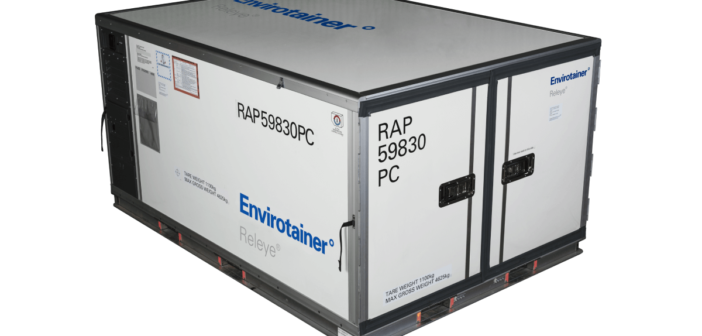Envirotainer awarded patents for Releye freight containers

Envirotainer’s temperature-controlled Releye air freight containers have been recognised for their innovative design that effectively and sustainably protects pharmaceuticals during transit. The Swedish Patent Authority has granted seven patents for the container designs, with a further two pending.
Among the patents for the secure cold-chain containers, which come in large RLP and RAP sizes, is frost protection. Accumulation of ice in a temperature-controlled unit can reduce efficiency or even lead to failure, causing temperature deviations and a resultant loss of the pharmaceuticals stored within. The frost protection reduces humidity in the container and therefore any potential for ice developing on the cooling system. This is an important benefit for shipments travelling to the tropics, where humidity can be high, and infrastructure lacking.
A design allowing air flow in walls was also granted a patent. This air flow distributes cooling air evenly throughout the container, providing a stable climate without hot or cold spots that could damage highly sensitive pharmaceuticals. It also means that pallets can be loaded against aircraft walls without restricting airflow, which maximises the volume of pharmaceuticals a container can carry – important for saving air freight costs.
Other patented features include cargo straps, automated test cycles, base-plate fastenings, a modular design, recessed temperature sensors, trend-controlled cooling, and air curtains which run when the container doors open. The last two of these innovations are still in the patent approval process.
With Swedish patents granted or pending, the same innovations have been submitted to the Patent Cooperation Treaty (PCT), which aids applicants in seeking protection internationally.
Commenting on the news, Dan Matttson, head of technical product management at Envirotainer said, “When we launched the Releye range, we raised the bar in cold-chain transportation to new heights of control, monitoring and autonomy. The patents officially recognise our innovation and illustrate the technical lengths we’ll go to when striving to keep temperature-sensitive pharmaceuticals safe while transporting them efficiently, sustainably and effectively.”
